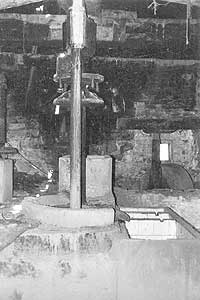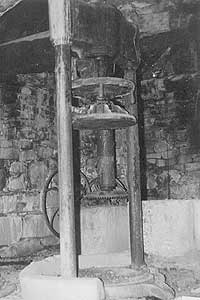
Labuerda

Both mills receive water from the Río Cinca.
Pictures 11-13: xii.2009
Pictures 14-20: by Mariano Coronas Cabrero, probably in the early 1980s


Pictures 11-13: xii.2009
Pictures 14-20: by Mariano Coronas Cabrero, probably in the early 1980s
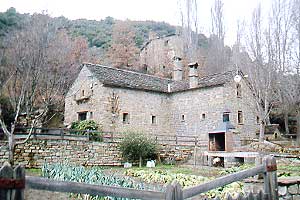
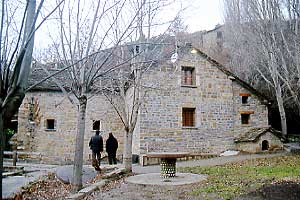
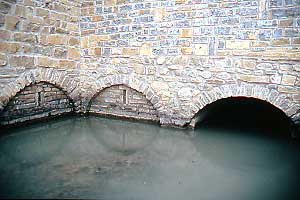
Storage was available in two kinds. First the containers where fresh olives waited
before their processing (the algorines
, 15) and second the kind with white tiles (20, 18) which
held the oil.
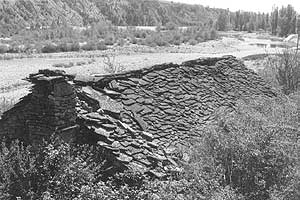
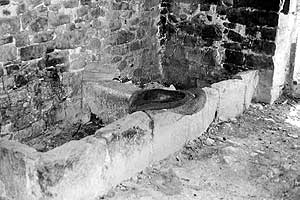
esteras
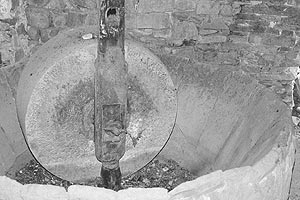

ruello, or
ruejo)
The oil was extracted mainly during December and January. The mill ran day and night and the process from start to end required about six hours time. The colour of its produce was natural; it was not enhanced with an additive like rape-oil.
The campaign was a festive time for children (and adults, to be sure!). They were spoiled with remojón
which was toast soaked with fresh oil and topped with garlic or sugar. Sometimes the harinero provided complimentary
slices of bread dipped in scrambled eggs and then fried in oil.
